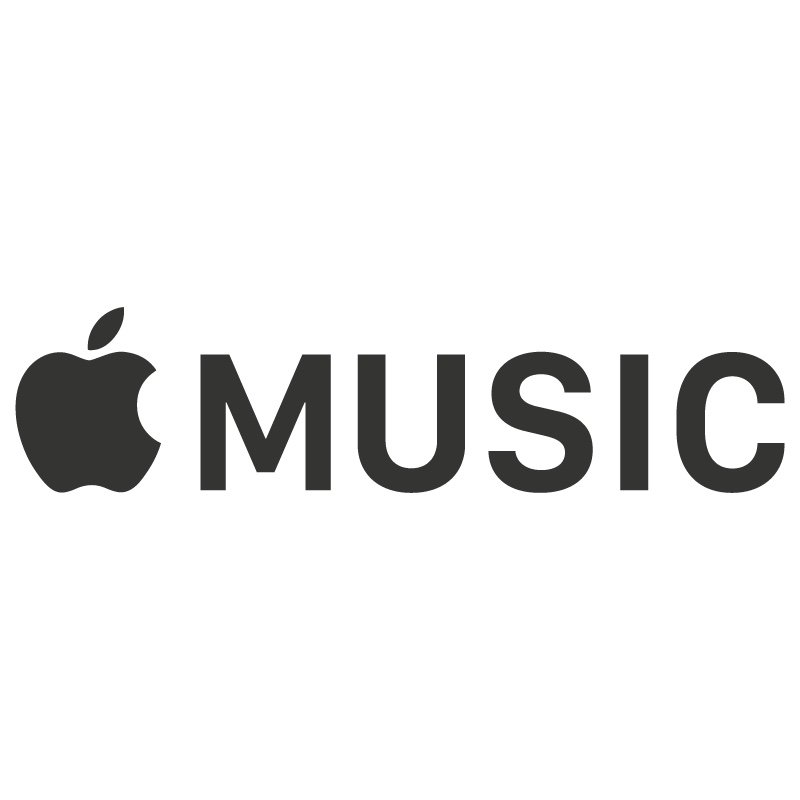Apple Music or Spotify — which is better?
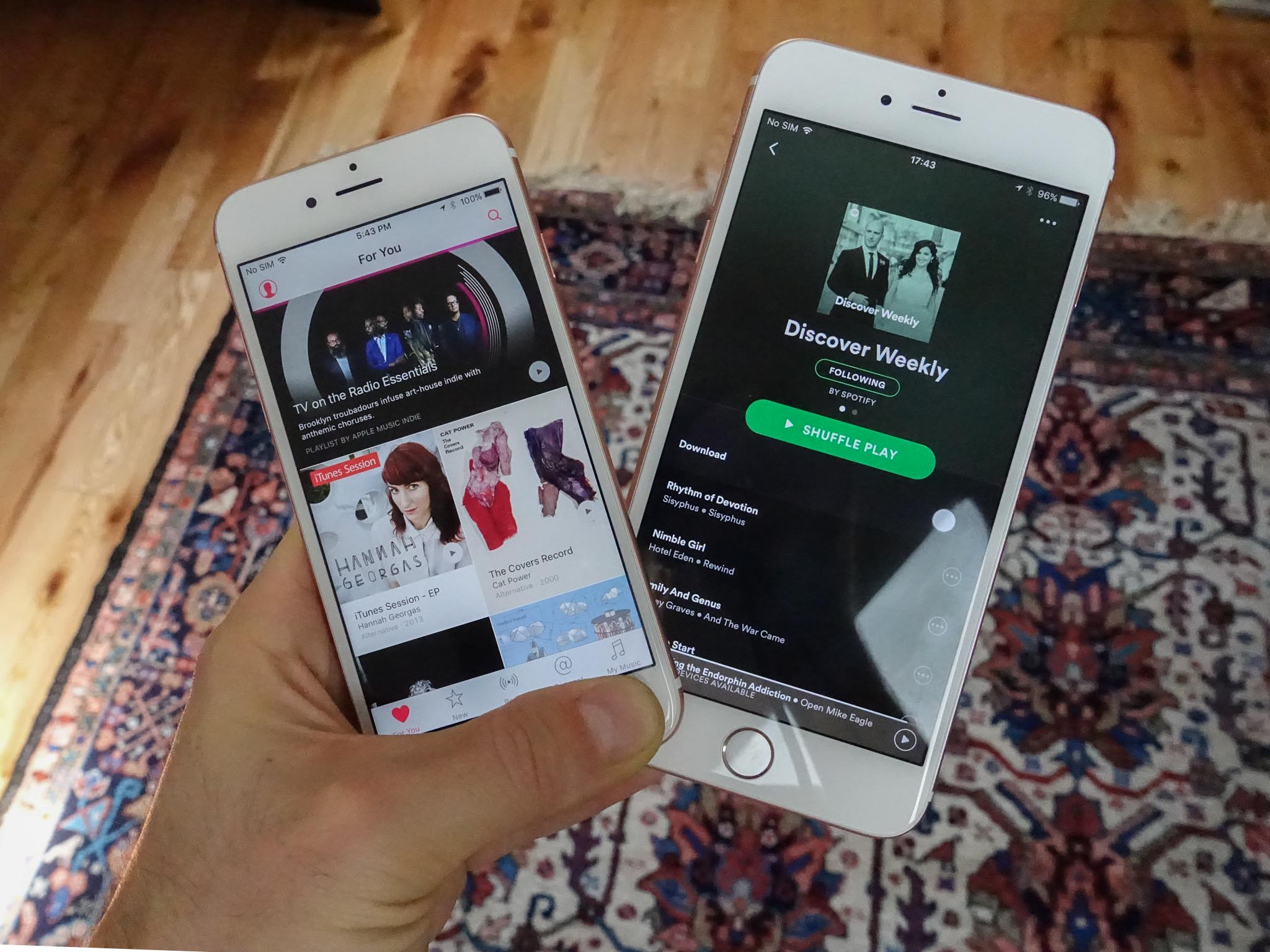
A year ago, Apple Music debuted with a three-month trial and no shortage of hype. The company was so confident of its product that it offered a three-month free trial to all users, as part of the iOS 8.4 update.
Audiophiles will want to subscribe to Spotify for its higher-quality streaming options.
Despite a few hiccups at launch, many of which were quickly fixed in iOS 8.4.1 released in the weeks after launch, and an effusive public call from none other than Taylor Swift to compensate artists during the free trial, Apple Music has mainly been received positively — when it isn't messing up people's existing music collections, of course.
Now that the dust has settled, a larger question remains: Should you subscribe to Apple Music if you run mainly iOS devices, or is Spotify — current market share leader in terms of paid subscribers — the better bet? Let's take a look.
Price
At the outset, both Apple Music and Spotify are evenly matched in terms of price: Both are $9.99 per month, per single account and, as of a few weeks ago, $14.99 for a family account with up to six users.
The main difference between the two services is that Spotify has a free, ad-supported tier (which has earned the ire of many popular artists) whereas Apple Music does not. After the three-month trial, Apple forces users to pay for the service. Spotify currently offers a three-month trial of its premium tier for $0.99.
Sound quality
Both Apple Music and Spotify offer music at varying encoding qualities. Apple Music has two options: regular, and high quality, which works out to around 128kbps and 256kbps, respectively. Spotify, on the other hand, offers three choices: Normal, High, and Extreme, at 96kbps, 160kbps, and 320kbps, respectively. Between the two services, I had a hard time telling the difference between them at their corresponding levels, but sticklers will want to subscribe to Spotify for its highest-quality option.
Availability
As of writing, Apple Music is available in 113 countries. Spotify is available in 60 countries.
Master your iPhone in minutes
iMore offers spot-on advice and guidance from our team of experts, with decades of Apple device experience to lean on. Learn more with iMore!
Music Collection
At this point, both Apple Music and Spotify are relatively evenly matched when it comes to their music libraries. Of course, it's all going to depend on region — what I get here in Canada is slightly different than what you get in the U.S., UK or Sweden — but generally, you'll find what you need on both services.
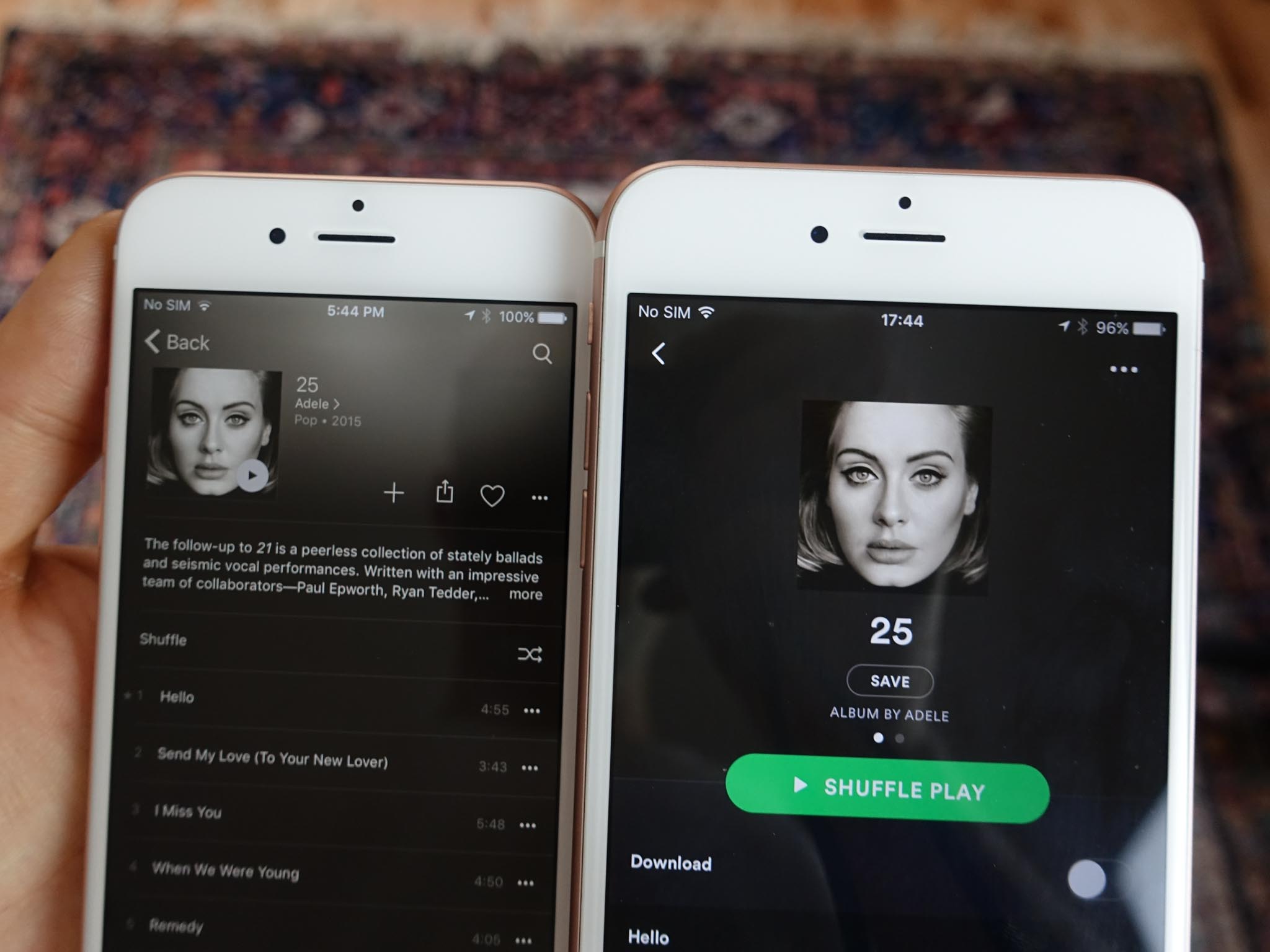
As Serenity points out in her review, Apple hasn't been able to snatch away huge exclusives from TIDAL like Beyoncé's Lemonade, but it has its own big names to point to — Taylor and DJ Khaled among them — as supporting the service with great content. But a big, robust library is table stakes at this point; it's how the companies use this library to its users' advantage that interests me.
Features
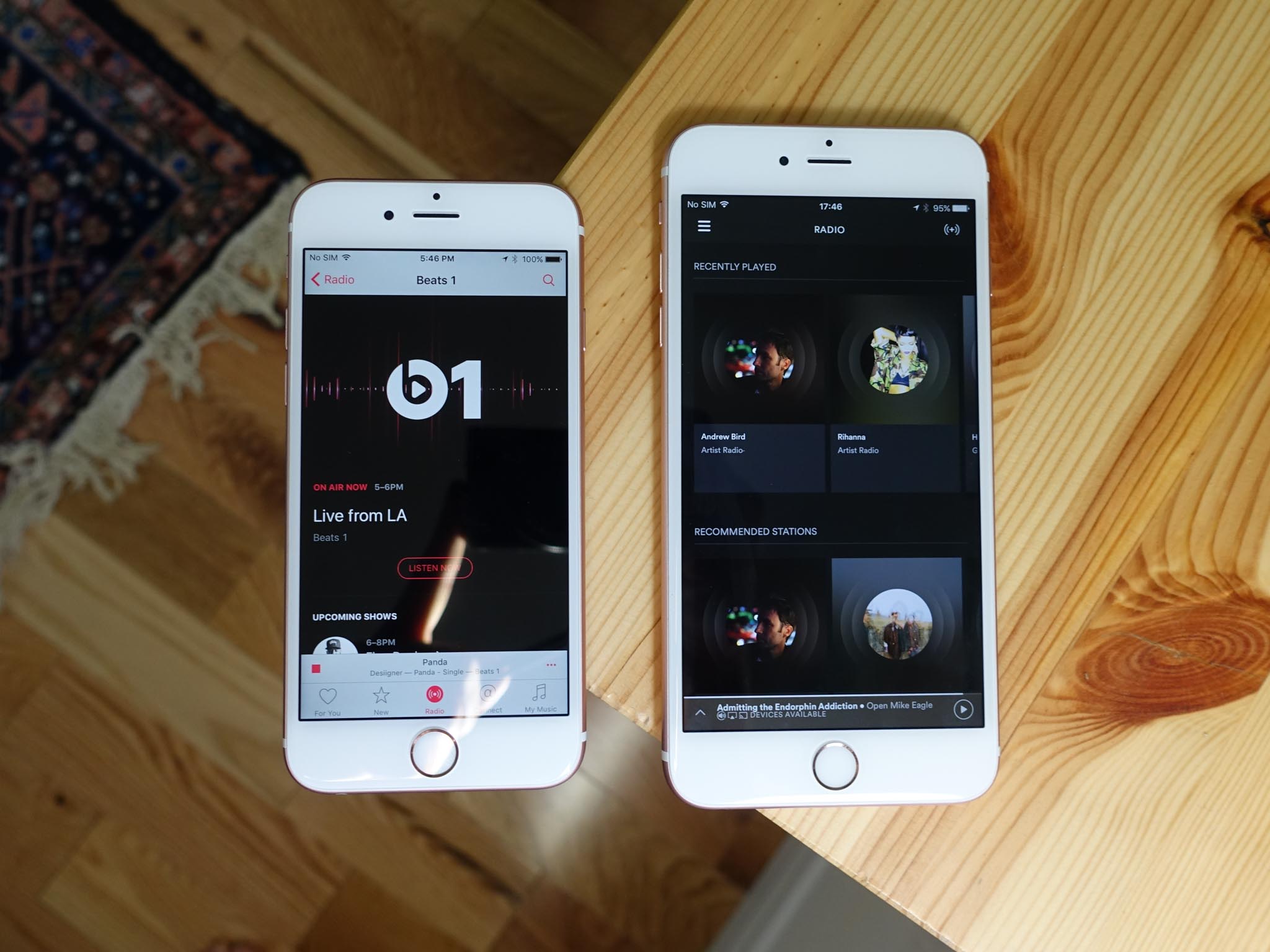
Radio
Broadly, both Apple Music and Spotify have some form of a la carte, radio, and playlist playback, and different takes on social integration. While I tend to prefer Spotify's mood-based playlists and randomly-generated radio stations, powered by The Echo Nest's fantastic algorithms, Apple also has a decent, though much smaller, selection of radio stations.
Where Apple Music excels is in providing live, DJed sets via Beats 1. Not only are the personalities like Ebro Darden and Julie Adenuga some of the most engaging and knowledgeable in the music business, but Apple Music invites well-known musicians — Elton John (!!), Josh Homme, Pharrell Williams — to host their own shows. Then they share the playlists! These are nuggets of gold for all subscribers, and something that Spotify just can't compete with. Unfortunately, in its current incarnation, these playlists are hidden and difficult to recall unless you explicitly subscribe to them, an issue that will likely be resolved with Apple Music's big overhaul in iOS 10.
Spotify does not have live DJs, but it does boast a far more comprehensive set of automatically-generated playlists.
Playlists
What Spotify lacks in live music it makes up for with its deep bench of playlists. And then there is Discover Weekly, the service's crown jewel. According to the company, over 40 million listeners subscribe to their personalized Discover Weekly playlists every week, and over half come back every week. It's a qualified success, and something that Apple is mimicking in some form with its upcoming iOS 10 overhaul. Better than the feature itself, Discover Weekly has exposed thousands of new artists to millions of new people, including me.
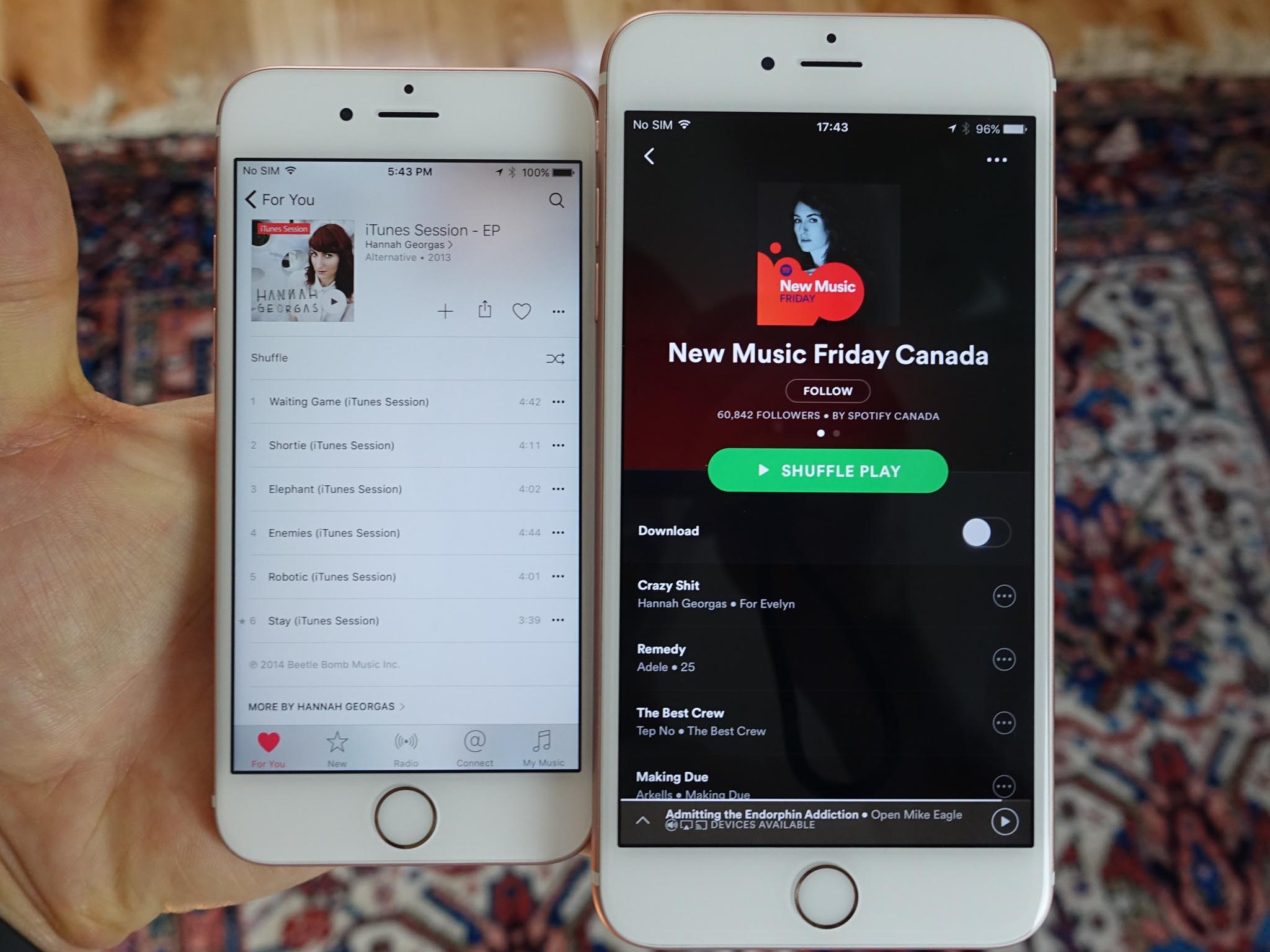
Apple's own crown jewel is its For You playlists, which I have been obsessed with ever since the service launched last year. If Spotify's Discover Weekly is my music appetizer, For You is my main course; I practically live inside this tab. What makes For You such a compelling feature is its ability to surface content that I want to listen to at the perfect times. They have exposed me to new music, and old favorites I hadn't thought about in years.
Connectivity
Apple Music relies on AirPlay to send music from an iPhone or iPad to a stereo or connected television. The service also lives on the Mac, Apple TV and, most unlikely of all, Android (where there is no AirPlay support, for obvious reasons).
Discover Weekly has exposed thousands of new artists to millions of new people, including me.
Spotify is available on nearly every platform, including iOS, Android, Windows 10, Roku and many others. It's the Netflix of music streaming services. The company has also created an AirPlay competitor in Spotify Connect, a way to push audio to any manner of connected speakers. Though not as ubiquitous, Spotify Connect works with equipment from popular manufacturers like Libratone, JBL, B&O and many others.
Social
Apple Music has Connect, which is supposed to interface musicians directly with their fans. In reality, that hasn't really happened, and the feature is largely being deprecated in iOS 10. In the meantime, many artists' pages are ghost towns of aimless posts and aging music videos.
Spotify approaches social differently: It connects you with your friends on social media to get a glimpse at what they're listening to, in real time. While it doesn't go as far as Rdio, which created a small community of dedicated music lovers by allowing people to post reviews on albums, it's still an essential feature, especially as more of my friends and family subscribe to the service.
Podcasts, concerts and music videos
Spotify has begun separating itself from the rest of the music streaming services by integrating unique video content from broadcasters like The Comedy Network and BBC, among others, in addition to supporting podcasts. It's unclear whether this hedge will be a success for the startup, but it worked for Netflix, so what's to say it can't do the same for Spotify? The company also lists nearby concerts within its app, which has proven quite useful.
Apple already embraced podcasts long before it debuted its music streaming service, and they continue to live separately. But it supports a growing library of music videos and concerts, which are among its only video elements.
Making the best of Apple Music and Spotify
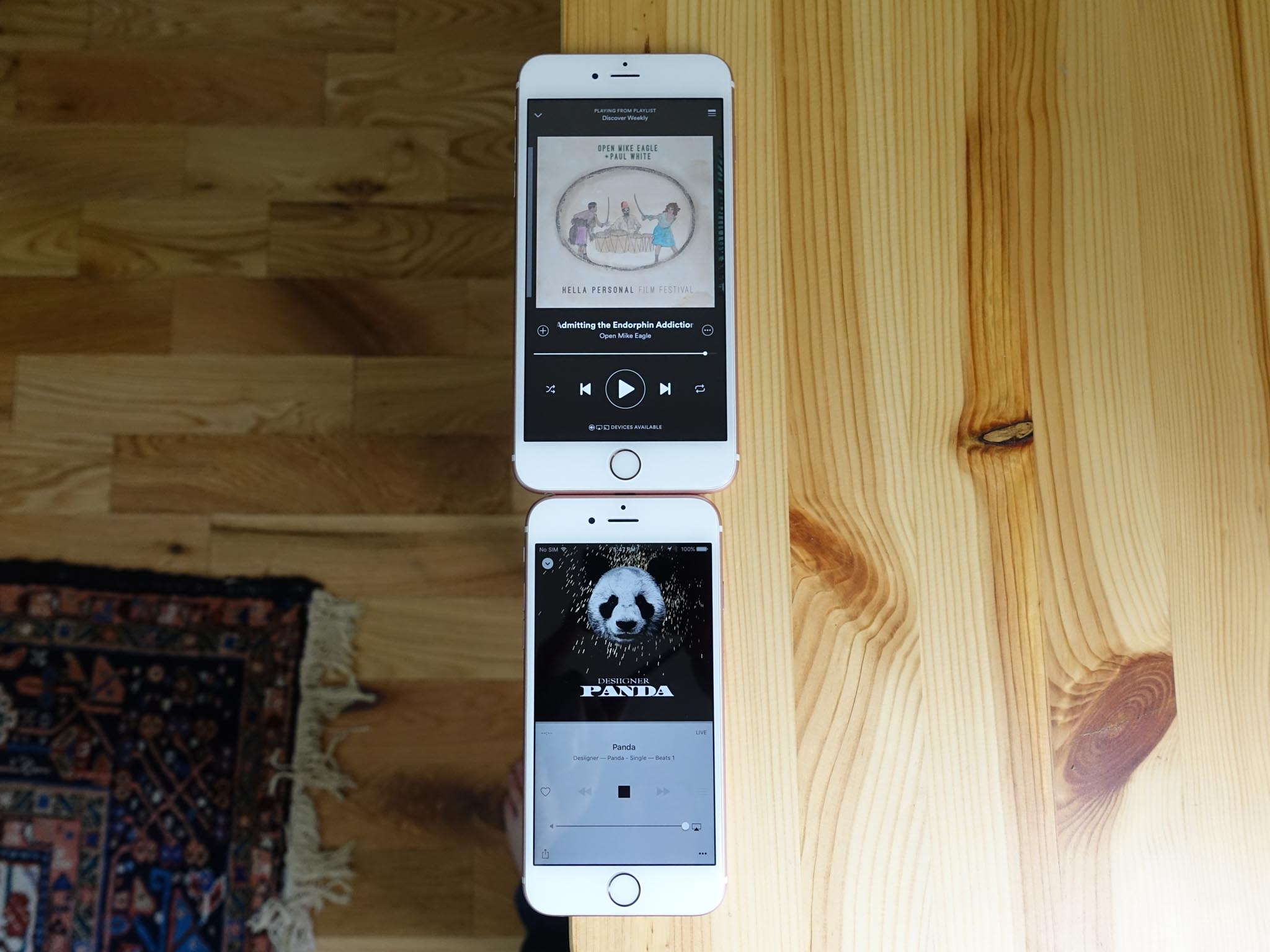
Apple Music is set to get a big usability upgrade in iOS 10, simplifying its user interface and hiding less popular elements, like Connect, that people weren't using. With a light, bright color scheme, Apple Music has always been inviting to use, if a little difficult to master.
If you don't use Siri to control your music, Spotify is currently the better choice for most people
Spotify, on the other hand, embraces the darkness, with a permanent black background under white text. Both apps are relatively easy to use, with intuitive controls and plenty of options for adding songs or albums to new playlists, or adding them to ongoing queues. Both services also, thankfully, support offline playback.
Apple Music can also be played using Siri, which is a huge advantage for Apple's homegrown service. While you can enter the Spotify app using Siri, integration with Siri allows for complex requests, such as "Play some popular music from the 90s," which, in my case, began playing that slow-dance classic, Save the Best for Last by Vanessa Williams.
So, which one should you go for?
Both Apple Music and Spotify are among the best music streaming services available today, and are differentiated in increasingly narrow ways. Ultimately, both can be trialled for three months without much investment.
But if you're going to choose one service, and don't regularly use Siri, Spotify is the better choice for most people — even those on iOS. It may lack the live music of Beats 1, but its playlists and algorithmic radio options more than make up for it. Moreover, its more intuitive interface, podcast and concert integration, unique video content, and excellent sound quality make it the music service to beat right now.
With around three months left until iOS 10 is released, if you haven't tried Spotify yet, now would be the right time.
Daniel Bader is a Senior Editor at iMore, offering his Canadian analysis on Apple and its awesome products. In addition to writing and producing, Daniel regularly appears on Canadian networks CBC and CTV as a technology analyst.
